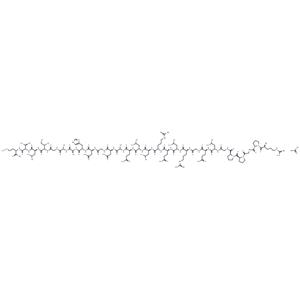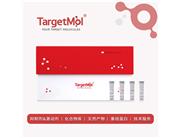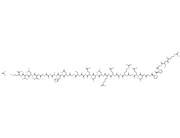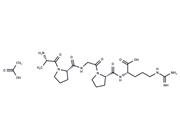| Name | Orexin B, rat, mouse Acetate |
| Description | Orexin B, rat, mouse Acetate (Rat orexin B) is an endogenous agonist at Orexin receptor with Kis of 420 and 36 nM for OX1 and OX2, respectively. |
| In vitro | Orexin B is derived by proteolytic amino acid precursor, prepro-orexin, which is encoded by a gene localized to chromosome 17q21 in humans. In radioligand binding studies, Orexin B has a higher affinity for the OX2 receptor[1]. Human Orexin B has two amino acid substitutions when compared with the rodent sequence. OX2 receptor is indeed a high-affinity receptor for human orexin B, with an IC50 of 36 nM in the binding assay and an EC50 of 60 nM in the [Ca2+]i transient assay. Human Orexin B has significantly lower affinity for the human OX1: the calculated IC50 in the competitive binding assay and the EC50 in the [Ca2+]i transient assay are 420 nM and 2500 nM for human orexin-B, respectively[2]. |
| In vivo | Human Orexin B significantly augments food intake; at the 2 hr time point, 5- and 12-fold stimulation of food consumption is observed by 3 nM and 30 nM orexin-B, respectively[2]. |
| Storage | keep away from moisture | Powder: -20°C for 3 years | In solvent: -80°C for 1 year | Shipping with blue ice/Shipping at ambient temperature. |
| Solubility Information | DMSO : Insoluble
H2O : 2.5 mM, Sonication is recommended.
|
| Keywords | OXReceptor | OX2 | OX1 | OX Receptor | Orexin B, rat, mouse Acetate | Orexin B Acetate | Orexin B |
| Inhibitors Related | L-368,899 hydrochloride | YNT-185 | IPSU | MK-3697 | Filorexant | DORA-22 | Suntinorexton | OXA (17-33) acetate | PF3274167 | ACT-462206 | Seltorexant | TCS 1102 |
| Related Compound Libraries | Peptide Compound Library |

 United States
United States






